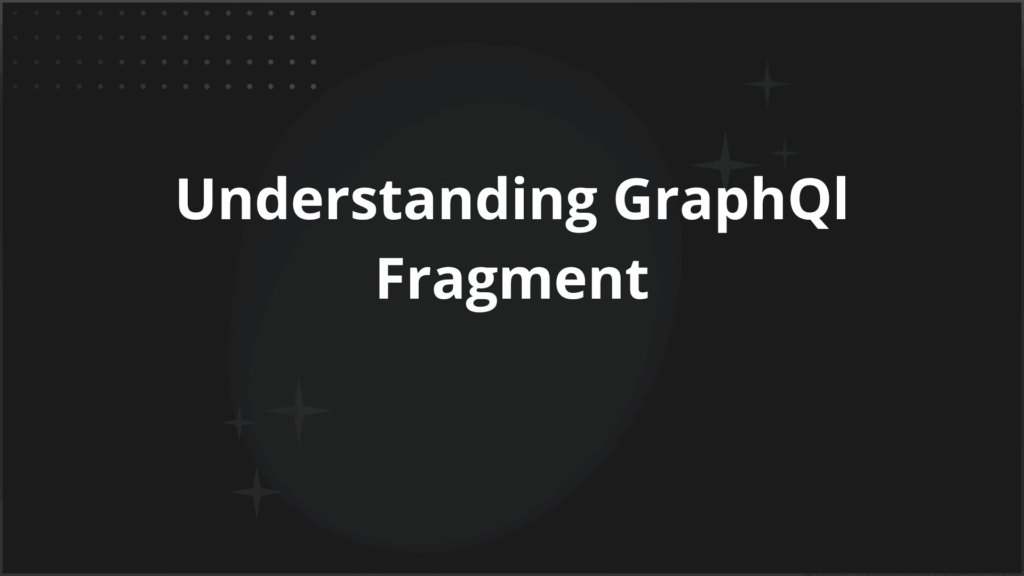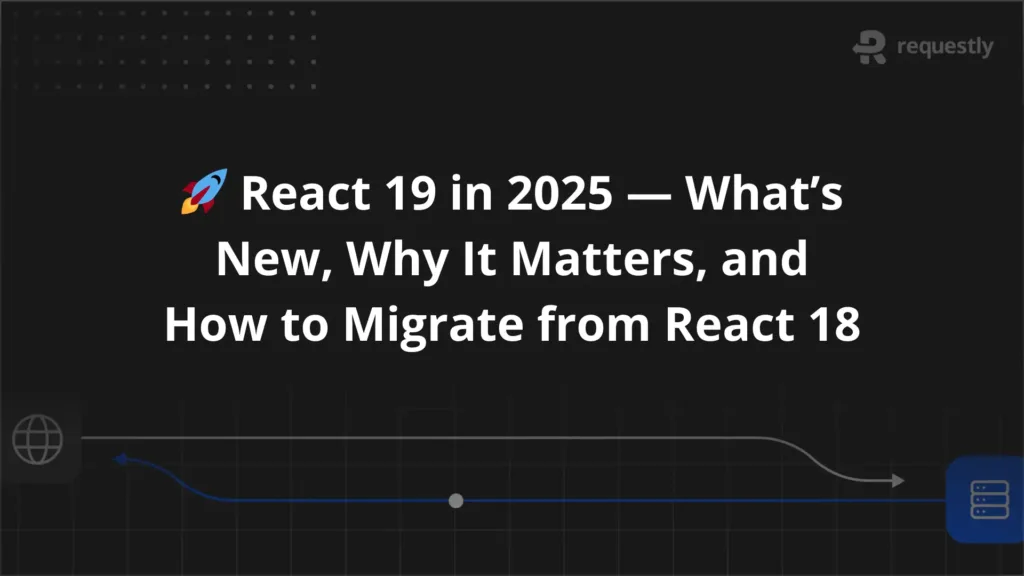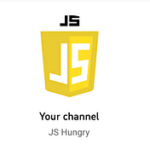Understanding GraphQl Fragment


GraphQL Fragments are reusable units of a GraphQL query that enable developers to define a set of fields once and include them in multiple queries. They address the problem of repetitive field selections, making queries more readable, maintainable, and efficient. By encapsulating common field selections into fragments, developers can reduce redundancy, improve consistency, and simplify complex query structures.
This article explores what fragments are, why and how to use them, advanced nesting techniques, challenges, best practices, and how Requestly by BrowserStack can streamline debugging and testing.
What Are GraphQL Fragments?
GraphQL fragments are reusable units of a query that allow developers to define a set of fields once and include them in multiple queries or mutations. They help reduce duplication and improve the maintainability of GraphQL operations by grouping common fields together.
A fragment consists of three parts: a unique fragment name, the type condition specifying the GraphQL type it applies to, and the selection of fields to fetch. Fragments are declared using the fragment keyword and can be included in queries using the spread operator (…).
For example, a fragment named UserInfo defined on a User type might include fields like id, name, and email:
fragment UserInfo on User {
id
name
email
}
Any updates to the fragment will automatically reflect across all queries that use it, streamlining query maintenance and consistency.
Fragments also support nested fields and can be composed within other fragments, enabling flexible and modular query structures. This makes them a powerful tool for managing complex GraphQL queries efficiently.
Benefits of Using GraphQL Fragments
GraphQL fragments provide numerous advantages that improve the development and maintenance of GraphQL queries:
- Reduce Duplication: Fragments enable defining a set of fields once and reusing them across multiple queries, minimizing repetitive code and the risk of errors.
- Improve Readability: By breaking large queries into smaller, reusable pieces, fragments make queries easier to understand and manage.
- Simplify Maintenance: Updates to fragments automatically propagate to all queries using them, reducing the effort needed to maintain consistent data fetching.
- Enhance Client-Side Caching: Fragments improve caching efficiency by enabling clients to recognize repeated data structures and reuse cached results.
- Align Data with UI Components: Fragments allow colocating data requirements with UI components, making it intuitive to manage the data dependencies of individual components.
- Promote Modular Query Structure: Fragments encourage modularization of queries, helping developers organize complex data needs logically.
Overall, GraphQL fragments lead to cleaner, more efficient, and scalable querying by promoting reusability and maintainability in GraphQL operations.
How to Define and Use Fragments
GraphQL fragments are defined using the fragment keyword followed by a unique fragment name, the type condition, and a set of fields that belong to that type. This reusable set of fields can then be included in any query or mutation using the spread operator (…).
fragment UserInfo on User {
id
name
email
}
- Fragment Name: A unique name for easy reference, here it is UserInfo.
- Type Condition: Specifies the GraphQL type the fragment applies to, in this case, User.
- Field Selection: Lists the fields belonging to the specified type, such as id, name, and email.
Using Fragments in a Query
Once defined, fragments are incorporated into queries by spreading the fragment name where the fields should appear.
Example query using the above fragment:
query GetUser {
user(id: "123") {
...UserInfo
profilePicture
}
}
This query is equivalent to explicitly listing all fields in the fragment plus any additional fields like profilePicture. Any update in the UserInfo fragment automatically applies to queries using it, improving maintainability.
Inline Fragments
Inline fragments specify a fragment’s fields directly in the query without naming them, often used with interfaces or unions.
Example:
query GetProfile {
profile {
... on User {
id
name
}
... on Admin {
id
permissions
}
}
}
Inline fragments allow conditional field selections based on the object’s runtime type.
Using fragments in this structured way promotes clean, reusable, and maintainable GraphQL query design.
Working with Nested Fragments
GraphQL fragments can be nested inside other fragments, enabling the creation of complex, reusable query structures. This is particularly useful when querying hierarchical or related data, where one fragment can include another to build up detailed queries modularly.
Example
Consider two fragments: one for user details and another for comments authored by the user.
fragment UserInfo on User {
id
name
email
}
fragment CommentDetails on Comment {
id
text
author {
...UserInfo
}
}
In this example, the CommentDetails fragment nests the UserInfo fragment inside the author field, reusing the user fields without duplication.
Usage in Queries
You can then include the nested fragments in your queries like so:
query GetComments {
comments {
...CommentDetails
}
}
This query will fetch comment details along with the author’s information defined in the nested fragment.
When not to use GraphQL Fragments
While GraphQL fragments offer many benefits, there are situations where using them might not be the best choice:
- Simple or Small Queries: For very simple queries with minimal fields, introducing fragments can add unnecessary complexity without much benefit.
- Tightly Coupled UI and Data: If the application architecture tightly couples UI components with specific data shapes that rarely change, fragments might lead to over-engineering.
- Overuse Leading to Complexity: Excessive fragmentation or deeply nested fragments can make queries harder to read and understand, negating clarity benefits.
- Performance Concerns: In some scenarios, especially when fragments are misused to fetch large or deeply nested data repeatedly, query performance may degrade.
- Rapid Prototyping: For quick proofs of concept or MVPs, spending time on fragment design might slow down development unnecessarily.
- Lacking Tooling or Support: If the development environment or tooling lacks strong support for fragments, managing them effectively can become cumbersome.
In such cases, it may be more practical to use straightforward queries without fragments or reconsider architectural choices before adding fragment complexity.
Best Practices for Fragments
To effectively use GraphQL fragments while keeping your queries maintainable and efficient, consider these best practices:
- Keep Fragments Small and Specific: Create focused fragments that define a minimal, relevant set of fields rather than large, all-encompassing ones. This enhances reusability and clarity.
- Use Descriptive Names: Name fragments clearly to indicate their purpose and the associated data type, such as UserFields or PostSummary. This aids readability and collaboration.
- Organize Fragments Logically: Group related fragments together in your codebase, for example, by feature or data domain. This improves manageability and ease of discovery.
- Avoid Duplicate Fragments: Reuse existing fragments across queries instead of creating multiple similar ones to maintain consistency and reduce code bloat.
- Colocate Fragments with Usage: Whenever possible, keep fragments close to the components or modules that consume them to streamline development and updates.
- Limit Nesting Levels: Deeply nested fragments can complicate debugging and understanding queries; strive for a balanced nesting depth.
- Align Fragments with Schema Types: Ensure fragments match the correct types in the GraphQL schema to prevent errors and maintain compatibility during schema evolution.
By following these guidelines, you maximize the benefits of fragments, such as reuse, readability, and maintainability, while avoiding common pitfalls.
Debugging GraphQL Fragments with Requestly HTTP Interceptor
Debugging GraphQL fragments can be challenging due to the distributed nature of fields and complex query compositions. Requestly HTTP Interceptor simplifies this process by providing powerful features to intercept, modify, and inspect GraphQL requests and responses in real-time.
- Intercept Requests and Responses: Monitor and capture GraphQL queries that use fragments, allowing developers to visualize the exact data sent and received.
- Modify Queries On-the-Fly: Inject or alter fragments within queries dynamically without needing to change backend code, improving testing flexibility.
- Mock Fragment Responses: Simulate different backend responses for specific fragments to test various scenarios and edge cases effortlessly.
- Session Recording: Record network sessions capturing fragment-based queries and responses, enabling easy sharing and collaboration among developers.
- Simplify Troubleshooting: Quickly identify errors or unexpected data within fragments by inspecting modified requests and responses through an intuitive interface.
Using Requestly HTTP Interceptor enhances productivity by making fragment debugging transparent, straightforward, and collaborative, ultimately improving the quality and reliability of GraphQL APIs.
Conclusion
GraphQL fragments are essential for writing clean, maintainable, and efficient GraphQL queries by promoting reuse and reducing duplication. However, managing and debugging queries that use fragments can become complex as applications grow.
Requestly HTTP Interceptor offers a robust solution to this challenge by enabling developers to intercept, modify, and mock GraphQL queries and responses in real time. This makes debugging fragments transparent and straightforward, improving productivity and collaboration.
By combining the best practices of GraphQL fragments with advanced tools like Requestly, developers can build scalable, modular, and reliable GraphQL APIs that enhance both developer experience and application performance. Embracing these strategies paves the way for more maintainable codebases and faster development cycles.

Contents
Subscribe for latest updates
Share this article
Related posts






















